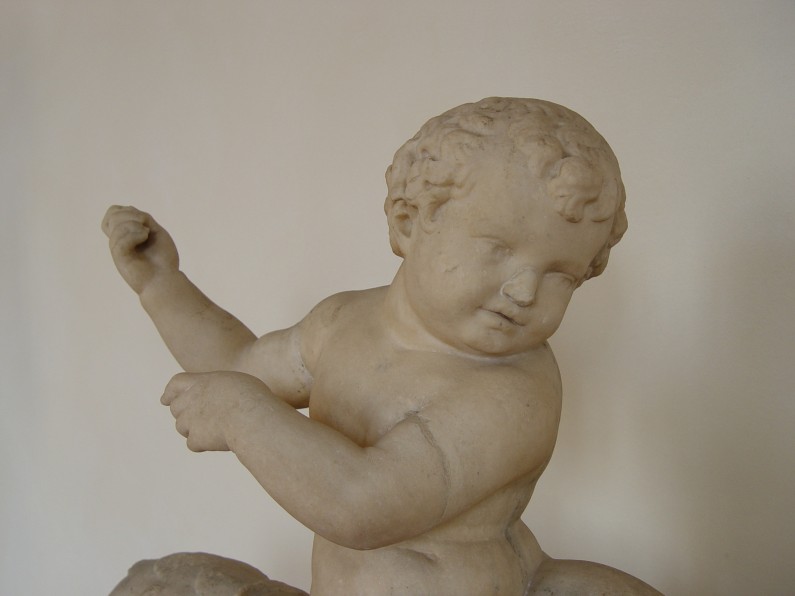
At the end of the scenic “Staircase of honour” of the 16th-century wing which shows the motto “Humilitas” of the Borromeo family, you reach the “Corridor of statues,” which today exhibits many of the original statues in bronze, terracotta and marble coming from the halls of the Nymphaeum, in which copies of the statues were placed, due to problems of preservation.
More
Among the most representative works are the marbles of “Venus in the bath” and the “Dragon ridden by a cupid,” both taken from the “Old Grottos” of the Nymphaeum and attributed to the sculptor, Marco Antonio Prestinari (deceased in 1621). Likewise important is the “Dragon” in terracotta, produced around 1585 to decorate an internal hall with water plays, testifying to the great interest of Pirro I Borromeo Visconti in zoomorphic figures and legendary creatures, which to his mind should have been placed in the grottos of the Nymphaeum, together with all the fantastic animals populating the mosaics of the walls, floors and ceilings.
To follow are a series of feminine busts in marble, among which the portrait of Annia Galeria Faustina stands out for its beauty. She was also known as Faustina Maggiore belonging to the dynasty of the Antonini family and aunt of the Roman Emperor, Marcus Aurelius. His face traces back to the 2nd century BC and is placed on a bust remade in modern times. Inside the two trophy cases some profiles of Roman Emperors in marble are kept and that once were embedded in the mosaic walls of the Nymphaeum, and a lead sculpture depicting the god, “Bachus,” or a “Silenus,” a minor divinity of the woods, wild and of a lewd nature, and often made to resemble a satyr. Once past the first sculptures, one enters the “little Blue parlour,” a small room where the decorations on the ceiling and walls were restored reproducing the original 19th-century style, set in correspondence with the “Circle of Mercury” and the lower floor. This room is characterized by the presence of a tiny balcony looking out over the Nymphaeum and is one of the very few structures that remained of the 16th-century first floor, untouched by the numerous changes this part of the complex underwent.

